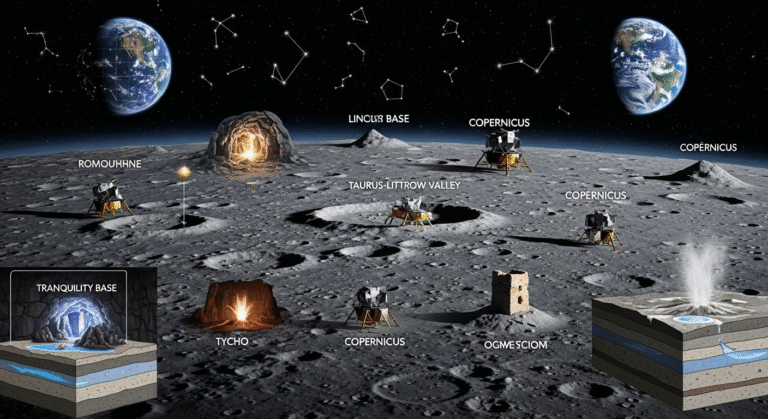
Hilltop hot springs are among the most magical natural destinations for travelers seeking relaxation, serenity, and a close connection with nature. Tucked away in remote scenic areas, these geothermal gems offer a unique way to unwind while surrounded by panoramic mountain vistas, starlit skies, and pristine wilderness. Whether you’re an adventurous hiker or a wellness seeker, a visit to a hilltop hot spring provides an unforgettable experience unlike any other.
In this guide, we’ll explore the allure of hilltop hot springs—from where to find them and what to expect, to insider tips for the perfect soak. If you’ve been craving a refreshing escape into the great outdoors, this is your go-to resource for everything related to hilltop hot springs.
What Are Hilltop Hot Springs?
Hilltop hot springs are natural geothermal pools typically located on elevated terrain, often nestled in mountainous or hilly landscapes. These springs are heated by the Earth’s geothermal energy, which brings mineral-rich waters to the surface. Because of their hilltop location, these springs often provide breathtaking 360-degree views of the surrounding valleys, peaks, and sky.
One of the key attractions of is their untouched beauty. Unlike commercial spas, most of these springs are wild and free, offering a raw and organic experience. Their elevated locations often require a moderate hike, but the payoff is more than worth the effort. Soaking in a warm pool while overlooking majestic landscapes is both relaxing and exhilarating—a true balm for the mind and body.
Where to Find the Best Hilltop Hot Springs in the U.S.
Some of the most stunning hilltophotsprings in the U.S. can be found in the western states, where geothermal activity and rugged terrain converge. States like California, Colorado, Idaho, Oregon, and Nevada are home to some of the most popular and picturesque hilltop springs.
For instance, HilltopHotSprings in Mammoth Lakes, California—often simply called “Wild Willy’s”—is one of the most accessible and scenic. Nestled in the Eastern Sierra, it offers expansive views of snow-capped mountains and vast desert plains. Similarly, Idaho’s Goldbug Hot Springs is another favorite, requiring a moderate hike but rewarding visitors with cascading pools perched above the Salmon River Valley. These destinations are not only beautiful but also rich in local lore and natural wonder.
Health Benefits of Soaking in Hilltop Hot Springs
Soaking in hilltop hotsprings is more than just a scenic experience—it’s a therapeutic one too. The mineral-rich waters found in natural hot springs are known for their healing properties. Common minerals like sulfur, calcium, magnesium, and lithium are absorbed through the skin and offer a wide range of health benefits.
Regular exposure to these minerals can help improve circulation, soothe sore muscles and joints, relieve skin conditions, and reduce stress. The natural heat helps to dilate blood vessels, promoting relaxation and muscle recovery. Combined with the serene environment and clean mountain air, a soak in a hilltop hot spring becomes a holistic wellness ritual that rejuvenates both body and spirit.
Tips for Visiting Hilltop Hot Springs Responsibly
Due to their natural and often fragile environments, it’s crucial to visit hilltop hotsprings responsibly. These locations are usually found on public lands and are open to everyone. Practicing Leave No Trace principles is essential to preserve their beauty for future generations.
Always pack out everything you bring in—including trash, food wrappers, and personal items. Avoid using soaps or shampoos, even if they’re biodegradable, as these can disrupt the natural ecosystem. It’s also respectful to keep noise levels low and be mindful of others enjoying the space. Finally, visit during off-peak hours (early mornings or weekdays) to avoid crowds and maximize your connection with nature.
What to Bring for the Perfect Hot Spring Experience
Preparing properly for your trip to hilltophot springs can make a huge difference in comfort and safety. Essentials include a backpack with water, snacks, a towel, a swimsuit, and layers of clothing suitable for mountain weather. Many springs are located in high elevations where temperatures can shift rapidly.
Sturdy hiking shoes are a must, as most hot springs require some trekking. A flashlight or headlamp is also handy if you plan to visit early in the morning or stay past sunset. Additionally, consider bringing a waterproof dry bag for your electronics and valuables, and a trash bag to help keep the area clean. Some seasoned visitors also carry a collapsible camping chair or insulated bottle for warm drinks to enjoy post-soak.
Conclusion
Hilltop hot springs offer a rare blend of natural beauty, tranquility, and healing. With their mineral-rich waters and stunning surroundings, these geothermal wonders are a must-visit for nature lovers and wellness enthusiasts alike. Whether you’re soaking beneath the stars or watching the sunrise over a mountain ridge, the experience is sure to stay with you for a lifetime.
So next time you’re planning a getaway, consider trading hotel spas for the wild, free beauty of a hilltop hot spring. Reconnect with nature, recharge your body, and rediscover the simple joy of soaking in warm waters under the open sky.
FAQs About Hilltop Hot Springs
1. What are hilltop hot springs?
Hilltop hotsprings are naturally heated geothermal pools located on elevated terrain, typically offering scenic views and a peaceful atmosphere.
2. Are hilltop hotsprings safe to use?
Yes, most are safe, but always check the temperature before entering. Some springs can be extremely hot, so caution is advised.
3. Do I need to hike to get to hilltop hot springs?
Many hilltop hotsprings require a short to moderate hike. Proper footwear and physical readiness are recommended.
4. Are hilltop hot springs open year-round?
Most are accessible year-round, but access may be limited in winter due to snow. Always check local conditions before planning a visit.
5. Can I camp near hilltop hot springs?
Some areas allow camping nearby, but regulations vary. Always verify with local authorities and practice Leave No Trace principles.
6. Are these springs clothing-optional?
Some hilltop hot springs are clothing-optional, especially those on public lands. Respect others’ choices and local norms.
7. Are pets allowed at hilltop hot springs?
While pets may be allowed on the trail, they should never enter the water. Always clean up after them and keep them leashed.
8. How hot is the water in hilltop hot springs?
Temperatures typically range between 95°F and 110°F, though this varies by spring. Test the water before soaking.
9. Is there an entrance fee for hilltop hot springs?
Most are free and located on public lands, but some may have small parking or maintenance fees.
10. What’s the best time of day to visit hilltop hot springs?
Early morning or late afternoon offers the best light, fewer crowds, and a more serene soaking experience.






